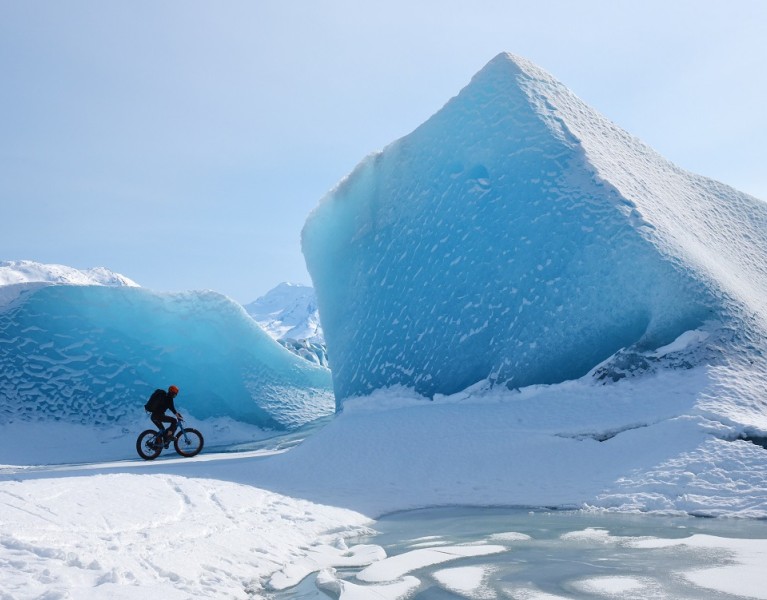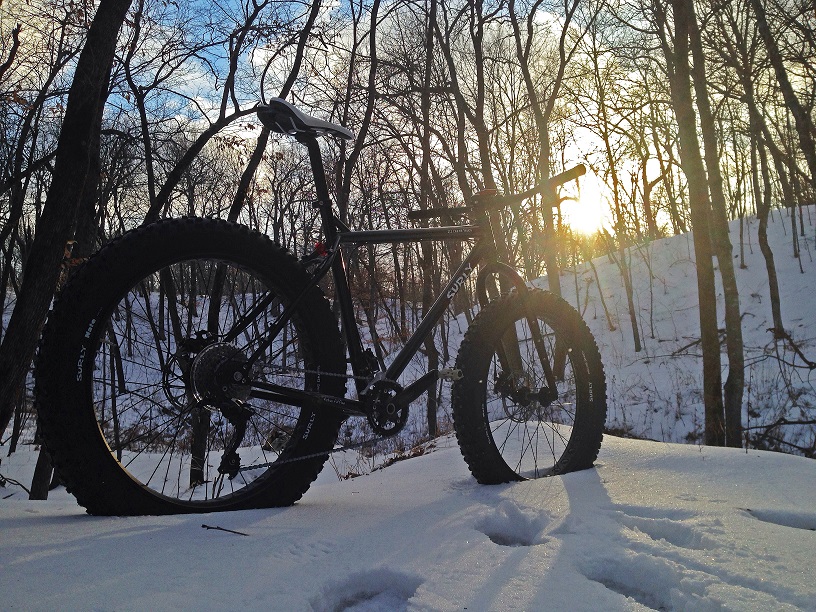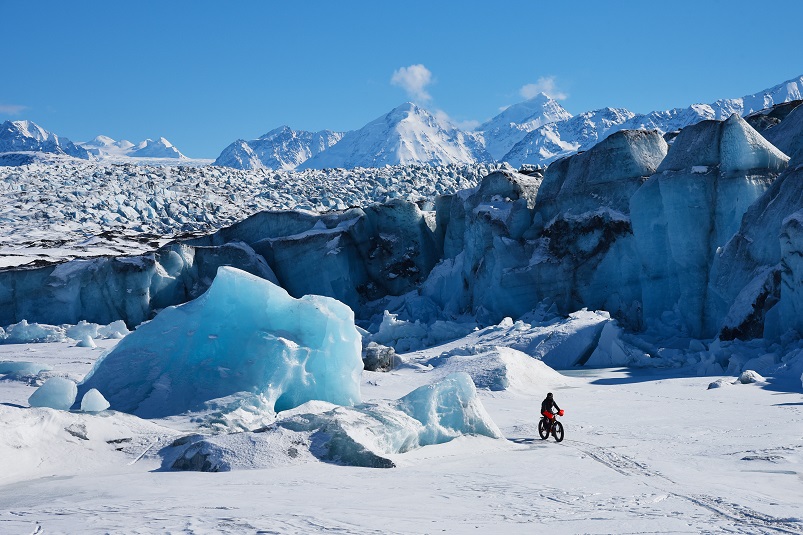
Fat Bikes: The Masters of All Terrain
Table of Contents [Show]
Fatbikes. Fat bikes. Fat-tire bikes. Or "fatties" for short. Just don't call them fluffy, because these cycles are built for all-terrain: packed single track, sand, and snow. They're more utilitarian than standard mountain bikes, too, as their wide, knobby, up to six-inch tires not only "float" over unstable surfaces but work with bulked-out frames to distribute weight.
So put on a few pounds and gain some inches this winter!
The history of the fat bike
Beginning in the 1970s when road bikes were all the rage, some cyclists weren't satisfied by eating asphalt on rural back roads and bustling suburban expressways. They wanted dirt and pine needles in their road rash, and before long, a little garage tinkering turned sturdy-framed cruisers into what became the mountain bike counterpart to Neanderthals. Dubbed mountain bikes, they opened up a broad terrain and, paradoxically, paved the way for a new industry and multiple subcategories of what was then called "fat tire" cycling.
But those fat, chunky tires, which helped grip rough trails and distribute weight, still left frontiers to be conquered: loose sand and slippery snow. Through what biologists would call parallel evolution, fat bikes were born out of necessity in the United States' terrain extremes: snowy, icy Alaska and the desert trails of New Mexico.
From the land of ice and snow...
You've heard that Native Alaskans have more words for snow and ice than we have fibs for ditching work on a powder day. In 1986 the first Iditabike, a cross-country cycling event modeled after the famous dog sledding race, inspired Steve Baker to build the prototypical fat bike which he debuted two years later. Early improvisations included welding two individually-treaded wheels together and adding to "outrigger" wheels on extended hubs. When you can't machine your three-inch rims, you've gotta make do.
...to a desert state where the hot sands blow
Meanwhile, in New Mexico, mountain biking tour guide Ray Molina was modifying his fleet of bikes to better suit the sandy Southwestern environment. It didn't take long for those here in the lower 48 to explore the crossover potential. In a piece for the Santa Fe New Mexican, Mike Mellon of the Santa Fe Fat Tire Society wrote, "Across the country, snow mountain biking with fat bikes is becoming a destination activity. Some all-season resorts, such as Flagstaff (Ariz.) Nordic Center; Sugar Bowl in California; Sun Valley, Idaho; and a dozen others in the west, are grooming trails for fat bikes along with cross-country and Nordic skiing."
The original wizards of wide tires inspired other notable adventure cyclists to improve on the designs, ultimately creating frames for better ride posture and dedicated components.

Who loves fat bikes?
Police, game wardens, and beach patrols are finding fat bikes ideal where regular mountain bikes or gas-powered vehicles aren't appropriate. Hunters who cover a lot of ground to get to their favorite spot love fatties. They can go where ATVs and road vehicles can't with less disturbance to wildlife and the environment. Unlike most mountain bikes, fat bike wheels and frames are sturdy enough to pack out field-dressed deer.
If you're a die-hard bike commuter, you can be the only one to make it to the office when the roads are closed, and there's too much crud for your mountain bike. Hooray for you!
Any trail open to mountain bikers is fair game for fatties, and some Nordic and alpine ski parks are recognizing a new market as they welcome fat-tire fans. Only a few currently allow riders on groomed trails, but as momentum builds, cyclists may get more access in the future.
Fat bike accessories and gadgets
Fat bikes have gained enough popularity that accessory manufacturers are designing add-ons specific to these beefy bikes. You can find fork and frame bags, fenders, repair kit bags roomy enough for oversized tubes and tires, and plenty of aftermarket components to make your fattie truly yours.
Family-run Montana Scabbards builds ABS bike-mounted scabbards for rifles, shotguns, bows, and fishing equipment that work well on either mountain or fat tire bikes. They're lightweight, don't get caught up on branches or scrub, and keep a trim profile so you can lay your bike on the ground without bumping scopes or scratching Grandpa's hand-carved rifle stock.
Hunters and campers alike can hitch their fat bikes to rugged off-road bike trailers, available in a wide variety of styles and configurations. Even the bike trailer behemoth Burley, of the bright-yellow kid-carrier fame, offers two off road-worthy models.

Toughen up your mountain biking wardrobe
What about personal gear? Your mountain biking clothes will work just fine in mild weather, but in early spring and fall, you'll be adding breathable under layers. For full range of motion—and to help keep those base layer bottoms for traveling as much as you, look into breathable, water-resistant pants with a gusseted crotch and articulated knees. KÜHL's RENEGADE pants are just the ticket, with lightweight but durable fabric perfect for cutting through brush or taking the occasional header. As winter sets in, layer up with breathable fleece sweaters and lightweight shells so you can stay dry and regulate your body heat.
Leg gaiters are popular with fat bike enthusiasts, sparing your ankles and shoes from sand and snow. When it gets cold, snowmobile gloves or "pogie" mitts keep the knuckles dry. This is a huge plus if your fingers get a little creaky in cold weather, or wind kicks up those pointy ice crystals.
As for footwear, pick up some oversized pedals to accommodate your snow or hunting boots, or opt for your favorite clip and cycling shoe combo. Choose wisely, though, since you don't want to cake up your cleats if fat bike cycling is just a means to an end, and you don't want to carry hiking or snow boots.
The next big thing in cycling
Fat bikes are the perfect pastry-powered vehicle for conquering dunes, getting a head start on your next snowshoeing trek, or sneaking up on poachers. We were joking about being the sole survivor when your co-workers are snowed in. With a fat bike, you've got the means and excuse to have the trails all to yourself.
Featured image: Knik Glacier, by Paxon Woelber.


